Is Herringbone Hardwood Flooring Worth It?Herringbone hardwood flooring, with its intricate patterns and rich history, has become a coveted choice for homeowners and interior designers alike. This unique flooring style, characterized by its distinct zigzag pattern, offers a blend of tradition and modernity, making it a versatile option for various home décors. But is it worth the investment? Let's delve deeper into the world of herringbone hardwood flooring and uncover its charm. The Timeless Charm of Herringbone Hardwood Flooring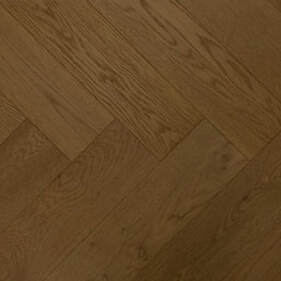 Hardwood Flooring Herringbone $9.99/square feet Hardwood Flooring Herringbone $9.99/square feet Originating from the Roman Empire, the herringbone pattern was initially used in road construction, with interlocking pavers providing a sturdy surface. The design soon found its way into the homes of the elite, symbolizing luxury and sophistication. Fast forward to today, and herringbone hardwood flooring has made a grand resurgence, becoming a staple in contemporary interior design. What sets herringbone apart from other flooring designs is its unique pattern. Each plank is laid in a manner that creates a broken zigzag, resembling the skeleton of a herring fish, from which it derives its name. This intricate design adds depth and dimension to spaces, making rooms come alive with character. Advantages of Herringbone Hardwood Flooring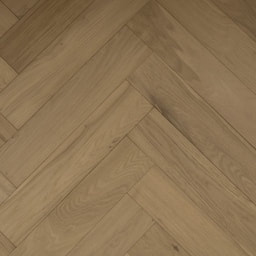 Hardwood Flooring Herringbone $9.99/square feet Hardwood Flooring Herringbone $9.99/square feet
Common Concerns and Misconceptions
Quality Indicators for Herringbone Hardwood Flooring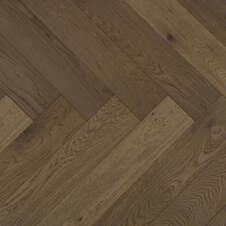 Hardwood Flooring Herringbone $9.99/square feet Hardwood Flooring Herringbone $9.99/square feet To ensure you're getting the best herringbone hardwood flooring, consider the following quality indicators:
Herringbone vs. Other Flooring Patterns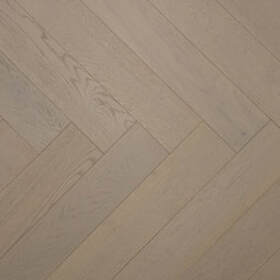 Hardwood Flooring Herringbone $9.99/square feet Hardwood Flooring Herringbone $9.99/square feet While herringbone holds its unique charm, how does it compare to other flooring patterns?
The Formality of HerringboneHerringbone, with its intricate design, often exudes a sense of formality and sophistication. But how formal is it really?
Addressing Common Concerns
Conclusion: Is Herringbone Hardwood Flooring Worth It?The decision to choose herringbone hardwood flooring ultimately boils down to personal preference and budget. Its undeniable charm, historical significance, and ability to elevate any space make it a worthy consideration for homeowners. While it might require a slightly higher investment, both in terms of material and installation, the end result is often a stunning floor that stands the test of time. For those in Toronto considering a flooring upgrade, Parqueteam Hardwood Flooring offers a range of options, including the ever-popular herringbone pattern. Whether you're leaning towards solid hardwood flooring or engineered hardwood flooring, the experts at Parqueteam can guide you through the process, ensuring a result that aligns with your vision. FAQ1. What is herringbone hardwood flooring? Herringbone hardwood flooring refers to a specific pattern of laying hardwood planks in a zigzag pattern, resembling the bones of a herring fish.
2. Is herringbone flooring more expensive than traditional patterns? Due to its intricate pattern and the precision required for installation, herringbone flooring can be more costly than standard plank layouts. 3. Does herringbone flooring add value to my home? Herringbone flooring, with its timeless appeal and luxurious look, can potentially increase the value of a home and make it more attractive to potential buyers. 4. How do I maintain my herringbone hardwood floor? Maintenance for herringbone is similar to other hardwood floors. Regular sweeping, occasional mopping with a damp cloth, and avoiding excessive moisture will keep it looking pristine. 5. Can I install herringbone flooring in any room? Yes, herringbone flooring can be installed in any room, from living areas to bedrooms. However, for areas with high moisture, like bathrooms, it's essential to choose a suitable finish and ensure proper installation. 6. Is herringbone pattern trendy or timeless? While the herringbone pattern has become increasingly popular in recent years, its historical roots make it a timeless choice that never goes out of style. 7. What type of wood is best for herringbone flooring? Herringbone flooring can be crafted from various wood types, including oak, maple, and walnut. The choice depends on personal preference, budget, and desired aesthetics. 8. Where can I get herringbone hardwood flooring in Toronto? Parqueteam Hardwood Flooring offers a wide range of herringbone hardwood flooring options suitable for various preferences and budgets.
0 Comments
Engineered Hardwood Flooring: A Comprehensive Guide for Toronto Homeowners
What is Engineered Hardwood Flooring?Engineered hardwood flooring is a type of flooring that is made up of a real hardwood veneer attached to a core constructed from multiple layers of wood, all laid in different directions. This construction method makes engineered hardwood more stable than traditional solid hardwood, especially in Toronto's variable climate. Understanding the Structure of Engineered Hardwood FlooringEngineered hardwood flooring is unique in its construction. Unlike solid hardwood, which is made entirely of a single piece of wood, engineered hardwood consists of a top layer of real hardwood veneer attached to a core of multiple layers of wood. These layers are laid in different directions, which gives engineered hardwood its stability and resistance to changes in temperature and humidity. The thickness of the top veneer layer can vary, but it's typically between 0.6mm and 6mm. The thickness of this layer can impact the lifespan of your engineered hardwood floor, as thicker veneers can be sanded and refinished more times than thinner ones. At Parqueteam Hardwood Flooring, we offer a variety of engineered hardwood flooring options with different veneer thicknesses to suit your needs. Benefits of Engineered Hardwood FlooringEngineered hardwood flooring offers several advantages over other types of flooring. Here are a few reasons why it's a popular choice for homeowners in Toronto:
Engineered Hardwood Flooring vs. Other Flooring OptionsWhen comparing engineered hardwood flooring to other types of flooring, such as laminate and vinyl, it's important to consider factors like cost, durability, and appearance. Engineered hardwood flooring tends to be more expensive than laminate or vinyl flooring. However, it's a long-term investment that can add value to your home. Unlike laminate or vinyl, engineered hardwood can be refinished if it becomes worn or damaged, extending its lifespan and making it a cost-effective choice in the long run. In terms of appearance, engineered hardwood flooring offers the beauty and warmth of real wood, which can enhance the aesthetic appeal of your home. While laminate and vinyl flooring can mimic the look of wood, they cannotmatch the depth and richness of real wood that engineered hardwood flooring provides. When it comes to durability, engineered hardwood flooring holds up well against daily wear and tear. While it can scratch, the ability to refinish the surface means it can look like new for many years. On the other hand, laminate and vinyl flooring can be more resistant to scratches but once damaged, they cannot be refinished and must be replaced. Engineered Hardwood Flooring vs. Laminate Flooring
Installation of Engineered Hardwood Flooring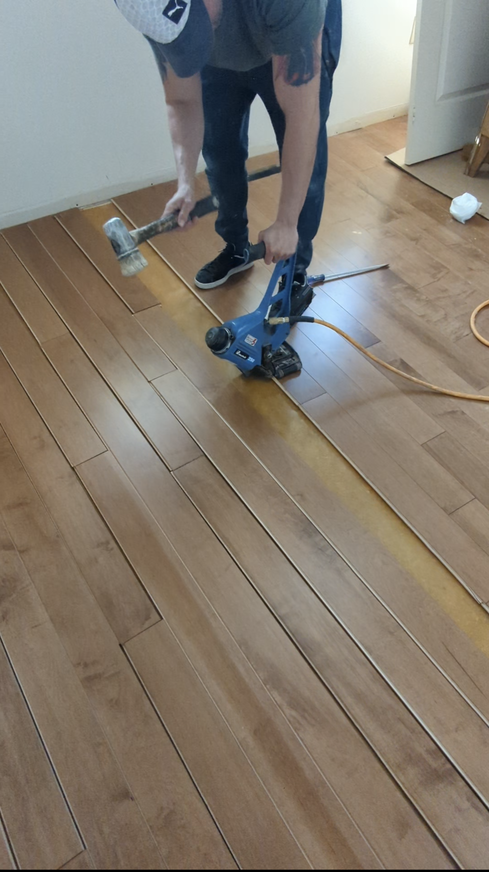 a professional installer meticulously laying down engineered hardwood planks, demonstrating the precision and expertise involved in the installation process. a professional installer meticulously laying down engineered hardwood planks, demonstrating the precision and expertise involved in the installation process. The installation of engineered hardwood flooring is a critical process that can significantly impact the performance and lifespan of your floors. At Parqueteam Hardwood Flooring, we offer professional engineered hardwood flooring installation services, ensuring that your floors are installed correctly and efficiently. There are several methods to install engineered hardwood flooring, including floating, gluing, or stapling. The choice of installation method depends on various factors such as the type of subfloor, the specific engineered hardwood product, and the conditions of your home. A floating installation is a method where the engineered hardwood planks are not attached to the subfloor but are instead attached to each other. This method is relatively quick and easy, making it a popular choice for DIY enthusiasts. The two options for floating install of engineered hardwood floors are: Click system and tongue and groove floating install. Gluing is another method where the engineered hardwood planks are adhered directly to the subfloor with a strong adhesive. This method provides a solid feel underfoot and can help with sound reduction. Nail-Down is a method where the engineered hardwood planks are attached to the subfloor using a special nailer and cleats to nail down the engineered hardwood floor.. This method is typically used when the subfloor is made of wood. Regardless of the installation method, it's crucial to ensure that the subfloor is clean, dry, and level before installation begins. This will help to ensure a smooth and successful installation process. The Cost of Installing Engineered Hardwood FloorsThe cost of installing engineered hardwood floors can vary depending on several factors, including the type of engineered hardwood product, the size of the area to be covered, and the complexity of the installation. As a general rule, you can expect to pay between $3 and $10 per square foot for materials, and between $2 and $8 per square foot for engineered hardwood flooring installation in the Toronto area. At Parqueteam Hardwood Flooring, we strive to provide high-quality engineered hardwood flooring at competitive prices. We also offer professional installation services, ensuring that your new floors are installed correctly and efficiently. Glue or Float: Which Installation Method is Better?One common question we often encounter is whether it's better to glue or float an engineered wood floor. The answer depends on several factors, including the type of engineered hardwood product, the conditions of your home, and your personal preferences. Floating is a method where the engineered hardwood planks are not attached to the subfloor but are instead attached to each other. This method is relatively quick and easy, making it a popular choice for DIY enthusiasts. However, floating floors may not feel as solid underfoot compared to floors that are glued or nailed down. Gluing, on the other hand, involves adhering the engineered hardwood planks directly to the subfloor with a strong adhesive. This method provides a solid feel underfoot and can help with sound reduction. However, it's more labor-intensive and requires a clean, dry, and level subfloor. At Parqueteam Hardwood Flooring, our team of experienced hardwood flooring installers can guide you in choosing the best installation method for your engineered hardwood floors. The Easiest Engineered Hardwood Flooring to InstallWhen it comes to the installation of engineered hardwood flooring, some products are easier to install than others. Engineered hardwood floors with a click-lock system are generally the easiest to install, as they can be floated without the need for nails or glue. This makes them a popular choice for DIY enthusiasts. However, for the best results, it's recommended to have your engineered hardwood floors installed by a professional. At Parqueteam Hardwood Flooring, our team of experienced hardwood flooring installers can ensure a smooth and efficient installation process, providing you with beautifully installed floors that will last for years. Engineered Hardwood Flooring and UnderlayAnother common question is whether engineered wood flooring needs underlay. The answer is yes, but only for engineered hardwood floors that are installed via the floating installation method. In this case, underlay is typically recommended to put under the installed engineered hardwood flooring. The underlay serves several purposes:
For engineered hardwood floors that installed via the nail down installtion method, an underlay is not needed. At Parqueteam Hardwood Flooring, we can advise you on the best type of underlay for your engineered hardwood floors, ensuring optimal performance and longevity. The Lifespan of Engineered Hardwood Floors
Do Engineered Wood Floors Scratch Easily?Like all types of hardwood flooring, engineered hardwood floors can scratch. However, the degree to which they scratch depends on several factors, including the hardness of the wood species used in the top veneer layer, the finish applied to the floors, and how the floors are used and maintained. To prevent scratches, it's important to keep your floors clean and free of dirt and grit, which can cause scratches. Using furniture pads, maintaining a suitable indoor humidity level, and avoiding walking on the floors with high heels or sports shoes can also help prevent scratches. If your engineered hardwood floors do get scratched, they can be sanded and refinished to restore their appearance. However, the number of times the floors can be refinished depends on the thickness of the top veneer layer. For Conclusion...Engineered hardwood flooring is a versatile and durable flooring option that offers the beauty of real wood with the practical benefits of man-made materials. Whether you're renovating your home or installing new floors, engineered hardwood flooring is a worthy consideration. We hope this comprehensive guide has provided you with valuable insights into engineered hardwood flooring. For more information on this and other flooring topics, be sure to check out our blog, where we regularly post articles to help you make informed decisions about your flooring needs. At Parqueteam Hardwood Flooring, we're committed to providing high-quality flooring solutions to homeowners in Toronto and the Greater Toronto Area. From hardwood flooring installation to hardwood flooring restoration and refinishing, we've got you covered. Contact us today to learn more about our services and how we can help you achieve the perfect floors for your home. Thank you for joining us on this journey into the world of engineered hardwood flooring. We look forward to serving you and helping you create the perfect floors for your home. FAQQ1: What is engineered hardwood flooring?
Engineered hardwood flooring is a type of flooring that is made up of a real hardwood veneer attached to a core constructed from multiple layers of wood, all laid in different directions. This construction method makes engineered hardwood more stable than traditional solid hardwood. Q2: How long do engineered hardwood floors last? On average, engineered hardwood floors can last between 20 to 30 years. However, high-quality engineered hardwood floors with a thick top veneer layer can last even longer, especially if they are well maintained. Q3: Do engineered wood floors scratch easily? Like all types of hardwood flooring, engineered hardwood floors can scratch. However, the degree to which they scratch depends on several factors, including the hardness of the wood species used in the top veneer layer, the finish applied to the floors, and how the floors are used and maintained. Q4: Is it better to glue or float an engineered wood floor? The answer depends on several factors, including the type of engineered hardwood product, the conditions of your home, and your personal preferences. Floating is a method where the engineered hardwood planks are not attached to the subfloor but are instead attached to each other. Gluing involves adhering the engineered hardwood planks directly to the subfloor with a strong adhesive. Q5: Does engineered wood flooring need underlay? Yes, an underlay is typically recommended for engineered hardwood flooring. The underlay serves several purposes, including acting as a moisture barrier, helping with sound reduction, and providing a softer feel underfoot. Q6: How much does it cost to install engineered hardwood floors? The cost of installing engineered hardwood floors can vary depending on several factors, including the type of engineered hardwood product, the size of the area to be covered, and the complexity of the installation. On average, you can expect to pay between $3 and $10 per square foot for materials, and between $2 and $8 per square foot for installation. Q7: Which is better, engineered hardwood or laminate? Both engineered hardwood and laminate flooring have their own advantages. Engineered hardwood offers the beauty and warmth of real wood, can be refinished if it becomes worn or damaged, and can add value to your home. Laminate flooring, while resistant to scratches and stains, is generally less expensive and can mimic the look of wood. However, it cannot be refinished and must be replaced if it becomes damaged. Q8: What is the easiest engineered flooring to install? Engineered hardwood floors with a click-lock system are generally the easiest to install, as they can be floated without the need for nails or glue. However, for the best results, it's recommended to have your engineered hardwood floors installed by a professional. |
Parqueteam Hardwood FlooringHardwood Flooring Toronto and The Greater Toronto Area. Archives
December 2023
Categories
All
|
Areas We Produly Serving... |
|


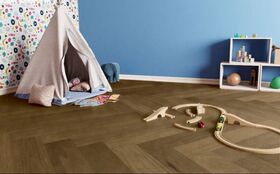
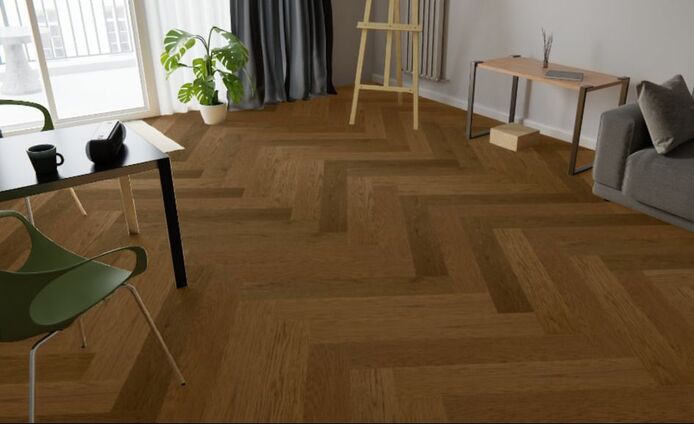
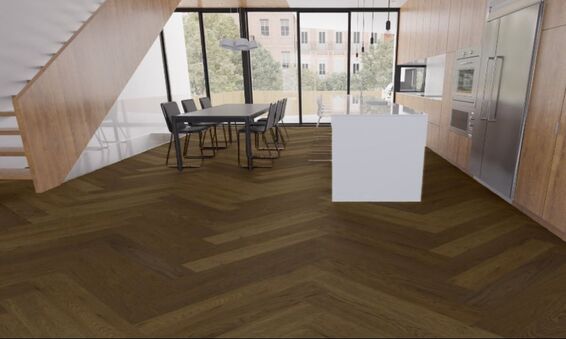
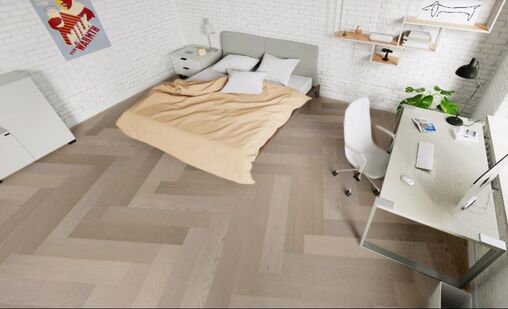
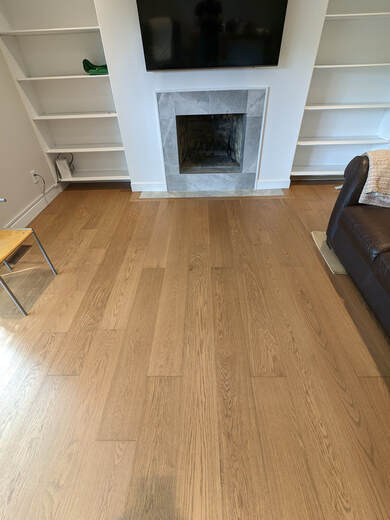

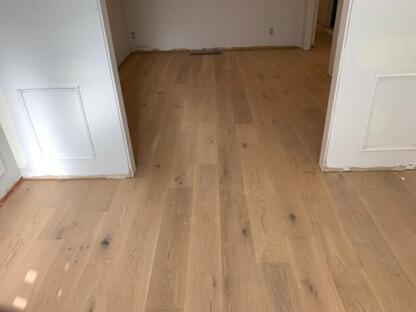
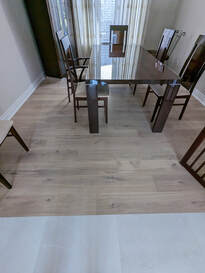
 RSS Feed
RSS Feed

